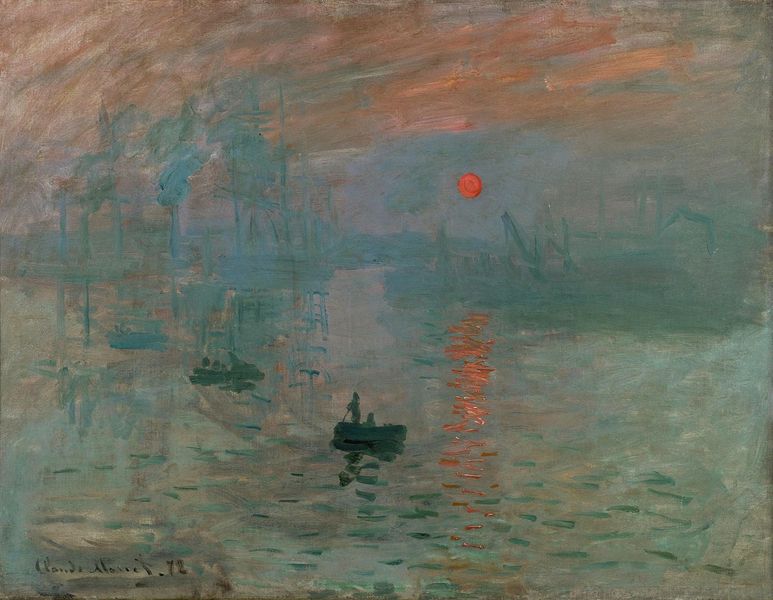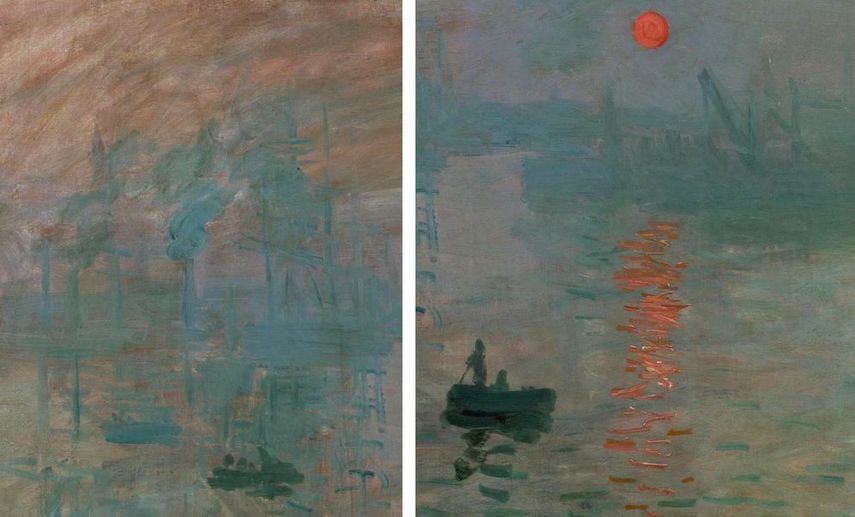How Claude Monet’s Impression, Sunrise Inspired Impressionism
Impressionism is considered to be the first revolutionary art movement that echoed the abstract thought that followed years later. Considered the catalyst of Modern art, it has played a pivotal role in art history, with its influence evident in a range of artistic practices.
The movement itself was set in motion with a single work of art - Claude Monet's Impression, Sunrise. Painted in 1872, this light and airy landscape painting was first shown at what would become known as the Exhibition of the Impressionists in Paris in April 1874.
The painting was shown alongside over two hundred works by thirty artists, including Edgar Degas, Camille Pissaro, Pierre-Auguste Renoir and Alfred Sisley. However, of all of the pieces displayed there, Impression, Sunrise became the most famous due to the criticism it attracted, which gave rise to the name of the movement.

Claude Monet, Impression, Sunrise
The iconic painting depicts Le Havre in the Northwest of France, Claude Monet's hometown. Monet visited the city in 1872, proceeding to create a series of works depicting the port. The six painted canvases depict the port "during dawn, day, dusk, and dark and from varying viewpoints, some from the water itself and others from a hotel room looking down over the port."
This particular work depicts Le Havre port at sunrise, featuring two small rowboats on the water in the foreground, the red rising Sun as the focal point and clipper ships with tall masts in the background. In the background, there are also other misty shapes such as smokestacks of packboats and steamships and other masts and chimneys silhouetted against the sky. Painted after the defeat of France in the Franco-Prussian War of 1870–71, it has been suggested by art historians that it celebrates the post-war regeneration of the country.
Art historian Paul Tucker suggested that while Monet's work is "a poem of light and atmosphere", it can also be seen as "an ode to the power and beauty of a revitalized France."
The focus of the Impression, Sunrise painting is almost entirely on color and light, emphasizing the breaking sunlight and its undulating reflections. Monet sought to perfectly capture the morning in evanescent detail and his medley of blues and oranges depict this fittingly. A slight sketch, completed on the spot in a single sitting from a window of Monet’s hotel room, it strays from traditional landscape painting and classic, idealized beauty.
Painted with loose brush strokes, it is meant to only suggest the scene rather than to mimetically represent it. The colors are very restrained and the paint is applied not in very thin washes. Layering gray in different tones, the artist provided depth despite imprecise details. With its forceful, clear shape and strong color, the Sun is the keynote of the canvas, which relies on the opposition of complementaries or near complementaries - orange and blue. Colors are placed side by side and are mixed optically by the viewer’s eye. Despite its simplicity, the composition is dramatically effective.

Exhibition of the Impressionists
Monet titled the piece just before the exhibition, referring to its hazy painting style. The exhibition took place in the studio of Nadar, a French photographer, featuring over 200 pieces by the Société Anonyme Coopérative des Artistes Peintres, Sculpteurs, Graveurs. While the other works were equally controversial, critics were particularly bemused by Monet’s painting—especially its title. Monet's piece garnered a great deal of scathing criticism from the public who believed it to be an unfinished piece of work.
Jules Castagnary of Le Siècle wrote that "they are impressionists in that they do not render a landscape, but the sensation produced by the landscape," adding that Impression, Sunrise takes leave of reality and enters the realms of idealism. "Dirty three-quarters of a canvas with black and white, rub the rest with yellow, dot it with red and blue blobs at random, and you will have an impression of spring before which the initiates will swoon in ecstasy," wrote Emile Cardon of La Presse. Louis Leroy of the satirical journal Le Charivari also published a review, titling it The Exhibition of the Impressionists, where he described a fictitious conversation between two visitors: "Impressionism, I knew it; after all I'm impressed so it must be an impression...What freedom! What ease of workmanship! Wallpaper in its embryonic state is more finished than this seascape!"
While they all intended to mock the new movement, these critics actually helped propel Impressionism. Following their reviews, the Société Anonyme Coopérative des Artistes Peintres, Sculpteurs, Graveurs rebranded as the Impressionists. Despite its hostile contemporary reception, the painting sold instantly and was later gifted to the Musée Marmottan in Paris.
Claude Monet, Impression, Sunrise
The Legacy
Throughout the years, Claude Monet’s Impression, Sunrise has been celebrated as the quintessential symbol of the Impressionist Movement. The movement itself immediately saw a surge in popularity, with Monet at the forefront. Monet continued to develop his impressionist style further, capturing "impressions" of his surroundings for the remainder of his career. In the following few years, he applied this style to the celebrated pieces in Haystacks and Rouen Cathedral series. Monet also continued his long preference for producing and exhibiting a series of paintings related by subject and perspective, most notably the series Water Lilies that is comprised of 250 large-scale paintings created over the course of 30 years.
However, Impression, Sunrise holds a special place in his oeuvre. The artist once recalled:
A landscape is only an impression, instantaneous, hence the label they’ve given us—all because of me, for that matter. I’d submitted something done out of my window at Le Havre, sunlight in the mist with a few masts in the foreground jutting up from the ships below. They wanted a title for the catalog; it couldn’t really pass as a view of Le Havre, so I answered: ‘Put down Impression.’ Out of that they got impressionism, and the jokes proliferated...
Today, Monet's Impression, Sunrise remains part of the permanent collection of Musée Marmottan Monet, continuing to captivate visitors with its radiant color palette and expressive brushwork.
Editors’ Tip: Monet's "Impression, Sunrise": The Biography of a Painting
This beautiful book accompanies a major exhibition celebrating the 140th anniversary of the First Impressionist Exhibition. It offers a colorful biography of Monet's Impression, Sunrise, from the influences that led to its creation in 1872 and the circumstances of its display two years later, to its eventual acquisition by the Musée Marmottan Monet in the mid-20th century. This study of the world-famous painting also brings the narrative up to date, analyzing the art-historical rediscovery of the work in recent decades and its enshrinement as a foundational painting in the history of modern art.
Featured image: Claude Monet - Impression, Sunrise (detail), 1872
Can We Help?
Have a question or a technical issue? Want to learn more about our services to art dealers? Let us know and you'll hear from us within the next 24 hours.

